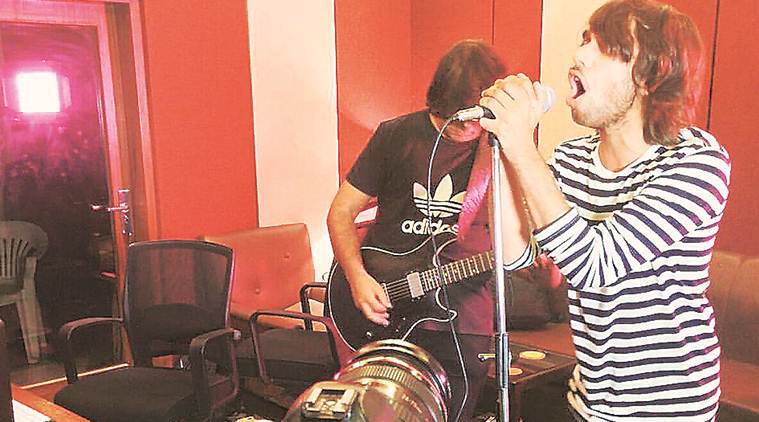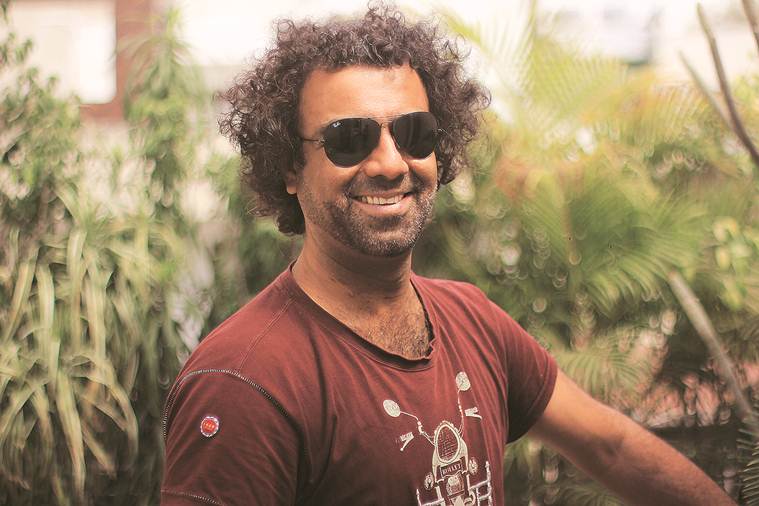
When legendary rock band The Police came to India for a performance at Rang Bhawan in Bombay in 1980, the anticipation of the arrival of the band’s iconic line-up — Sting (vocals and bass guitar), Andy Summers (lead guitar) and Stewart Copeland (drums) — had the hearts thumping and limbs pounding. Organised by a group of Parsi women, who constituted the local Time and Talent Club, the concert was aimed at raising funds for poor children in India. The women reached out to the band through a city-based agency, which contacted Sting’s agent, and the rest, as they say, is history. The tickets were sold immediately, much to the women’s surprise. For they thought they had invited a police/military band from Britain, with martial tunes in tow and not one of the world’s most formidable bands.
The incident is documented in journalist-turned-filmmaker Abhimanyu Kukreja’s Rockumentary, a 79-minute film that chronicles the journey of rock ‘n’ roll in India and how Indian musicians made a western style of music their own. “When I began my research in 2007, there was nothing available. It was a a curiosity project. We knew western rock stories but I wondered about stories from our own country. We have become so Bollywood-obsessed that we forget that there is another form of art too,” says Kukreja, who adds that all the research was through word of mouth, where one phone call led to another. “Now there is awareness,” says Dharamshala-based Kukreja, who grew up in Bhopal.

Co-produced by Saurav Dutta and Elizabeth Coffey, the film puts together pieces of history through interviews and archival footage. Kukreja begins his journey with Calcutta of the 1930s. This is when the British Indian Capital was the hub of jazz bands and the Anglo-Indian population was playing jazz at hotels and a slew of clubs. This is also when Pushkal Bahadur Budaprithi, a young trumpeter from Kathmandu, came to the city of joy and made it home. He found an opportunity to play with Teddy Weatherford Band. They called him George Banks, who became one of the first non-English musicians to be included in the jazz performances. His son Louis Banks is a famous jazz musician. Kukreja then introduces us to Iqbal Singh, a Sikh singer, who impersonated Elvis Presley and sang and danced like him. This was when local educated Indians went to Trincas, Magnolia, Blue Fox and Flurry’s, among others. He takes us through the ’60s, the world of bands such as The Mustangs, The Jets and The Savages. The latter was also the first band to get a record deal from Polydor, becoming the first Indian band to record in English. Goa-based Remo Fernandes, one of The Savages members, says in the film, “Rock ‘n’ roll was for the Indians exposed to western education and culture, which was for rich people.” The accessibility came from radio channels like Voice of America and Radio Rangoon. The ’70s and ’80s were replete with Niranjan Jhaveri’s Jazz Yatras.
The eight-chapter documentary also follows the bands of the ’90s — Parikrama, which opened for Iron Maiden, and Indian Ocean, that was doing rock music in Hindi. “Language wasn’t a barrier suddenly. While there was a lot of original music in English, there was now also the rock sound paired with Hindi, Bengali and Malayalam, among others. We adapted our languages with a western sound and it worked,” says Kukreja, who adds that the arrival of MTV also helped.
There are interviews with Louis Banks, Shillong-based legend Lou Majaw, Usha Uthup, Rahul Ram, Susmit Bose, Luke Kenny, Uday Benegal and Nandu Bhende of Savage Encounter, who used money from his aunt’s brothel to start the band, and Neel Chattopadhyay of the famed Atomic First, India’s first metal band.
The full-throated, emcee-style narration and Kukreja’s presence in too many frames is noticeable. “I was inspired by films like Exit Through the Gift Shop and wanted to follow this format,” he says.
He concludes the film with spotlight on the current bands, such as The Local Train and Avial, which are finding much attention online and offline. “And they don’t sing in English. That’s how rock ‘n’ roll has evolved,” says Kukreja.